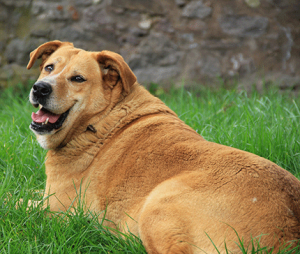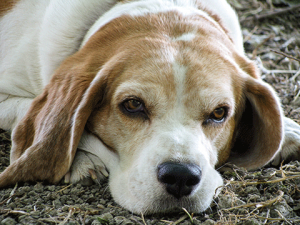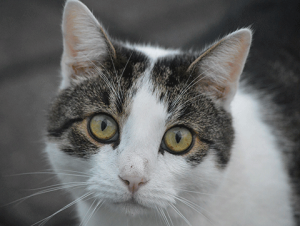Many people now are well aware that dogs can get heart disease – heart failure in breeds such as Cavalier King Charles Spaniels, Dobermans or Wolfhounds is fairly well recognised. However, most people aren’t aware that cats can suffer too – because, sadly, yes, cats can and do get heart problems.
What can cause it?
Like any animal, cats can suffer congenital heart problems, where the heart doesn’t form properly in the developing kitten. This is quite rare but is seen occasionally.
The most common heart disease in cats is called hypertrophic cardiomyopathy or HCM; this is a condition where the heart muscle becomes too thick and strong. Now that may sound great, having a nice strong heart – however, in HCM the heart is so thick that the space for the blood becomes narrowed, meaning the pumping action is actually weakened.
In some cats, HCM is caused by a genetic mutation (there is a defect in the gene controlling the muscle thickness, causing double or triple thickness muscle walls to gradually develop over time). This is most common in large breeds such as Maine Coons. In most cats, however, HCM occurs secondary to hyperthyroidism (an overactive thyroid gland). This hormonal condition causes the cat’s heart to overgrow, leading to HCM.
Other causes of heart disease (such as leaking valves, or narrowed arteries) can occur but are fairly uncommon.
What are the symptoms of heart disease in cats?
Unfortunately, most cats show very few symptoms until the condition is very advanced. Typical early signs include intermittent shortness of breath and reduced ability to exercise – but in most cats, these symptoms aren’t easy to recognise, as they are pretty subtle.
As the disease progresses, the cat may go into congestive heart failure, where the heart’s ability to pump is significantly impaired, leading to fluid accumulation. The symptoms include shortness of breath, coughing, and swelling of the abdomen and (occasionally) paws or face. However, most cats manage to hide these signs until they suffer a decompensation crisis where they can no longer cope with the fluid building up in their lungs. This usually presents with sudden onset difficulty in breathing – typically, gasping for air with an open mouth, looking terrified and severely stressed. Cats in this condition need to see one of our vets right away, at any hour if the day or night, as they would soon die without treatment.
Another common sign of advanced heart disease is the development of blood clots – typically a saddle thrombus, where a clot blocks off blood flow to the back legs. This is due to abnormal blood flow in the heart, triggering excessive clotting of the blood, and leads to paralysis of the affected leg or legs, severe pain, often with cold legs, and no detectable pulses. If not treated this is fatal, and sadly, even with treatment, many cats will not recover.
How is heart disease diagnosed?
Our vets can use a wide range of different techniques to diagnose heart disease in cats. A simple physical examination, especially auscultation (listening to the chest with a stethoscope) can often be revealing, but nice loud heart murmurs are rarer than in dogs. X-rays are very useful to assess the state of the heart and lungs but aren’t always suitable for very sick cats.
The most useful single technique is echocardiography, where an ultrasound machine is used to examine the size and shape of the heart and its chambers. Our machines can also be used to detect abnormal blood flow through the heart, and even to quickly assess the lungs of a critically ill cat for fluid build-up.
So what can be done about it?
Fortunately, there are a range of medical treatments available now. Diuretics (“water tablets”) are very important in reducing fluid accumulation; and there are a range of drugs for managing congestive heart failure. Anticoagulants (“blood thinners”) are also invaluable in treating and preventing blood clots from forming.
Unfortunately, most heart diseases cannot be cured yet, but we can usually improve your cat’s quality of life and lifespan if the condition is detected early.
If you think your cat may have a heart or breathing problem, make an appointment to see one of our vets as soon as possible.



